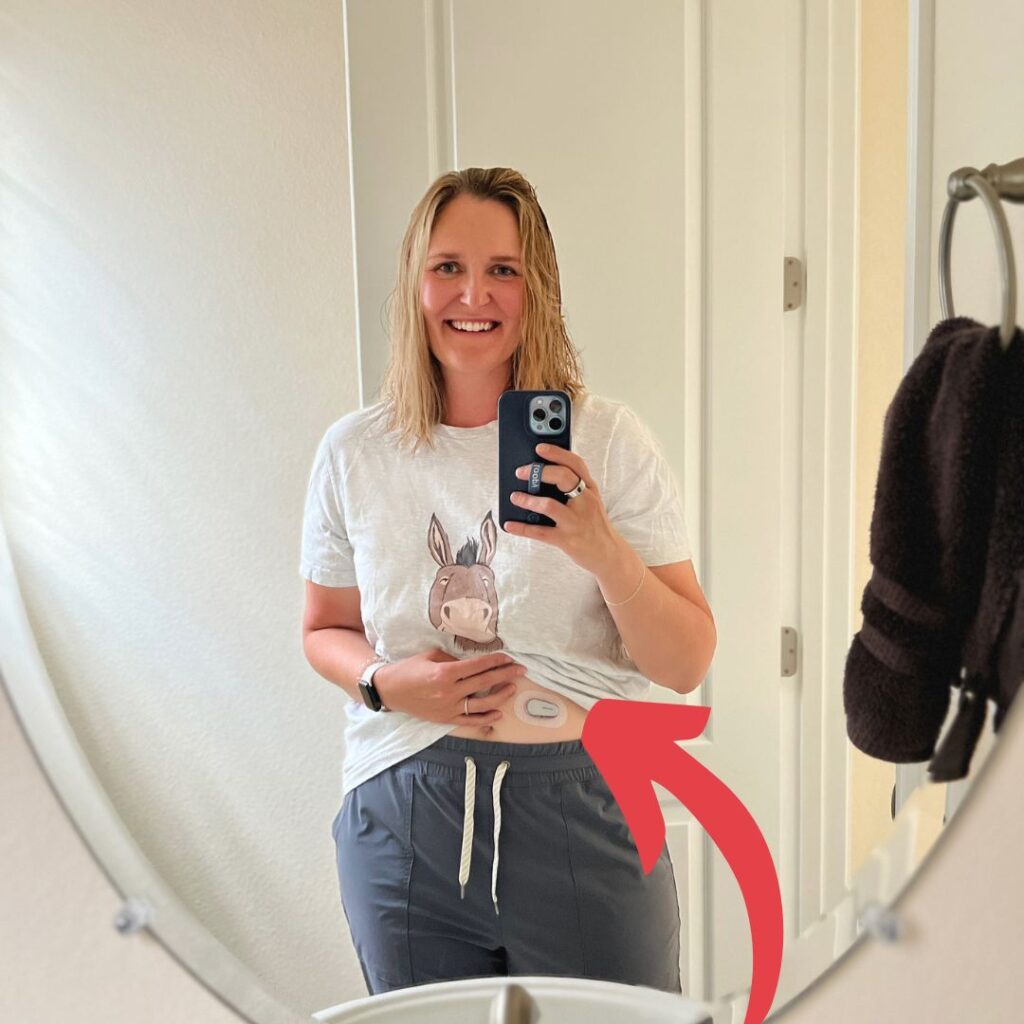Last year an influencer I follow on Instagram shared a photo wearing a Levels CGM monitor. I watched her make changes to her nutrition, her health transform… and I was intrigued. But when I looked up the cost of the app + monitor, I immediately dismissed it. I’d lost weight multiple times in the past (ahem, and gained it all back each time) so if I could just find the motivation on my own, then I could do it for free, right?
Except the motivation was nowhere to be found. At my annual checkup, the doctor wanted to talk about my diet. She gently encouraged me to prioritize veggies/plants, limit processed carbs and try to kick my sugar addiction. Yeah, yeah, yeah I know… easy for you to say, doc!
Despite a few (admittedly weak) efforts to eat better, nothing changed. I chalked it up to that 40th birthday right around the corner. Then in February I saw that same influencer share a photo of her CGM… and this time I impulsively bought one.
It took me two months to actually open the box. If I’m being honest, I was scared about what it would reveal… and the changes I would have to make. I also used the excuse that I needed to find the ‘perfect’ 10 day window to wear it… spoiler alert: there’s never a perfect window.
But one day at the end of April, I finally opened the box and applied the monitor. Full disclosure: I very much overreacted about pushing the button because I expected it to hurt. After 30 mins of being a huge chicken I watched a video on YouTube of a child applying the sensor and saying it was painless… and decided to push the button. She was right. I didn’t even feel it.
My understanding of nutrition changed that day. I watched my first glucose curve forming in the Levels app after I ate lunch (a small serving of mac and cheese, but I added tuna because people online were saying to aim for at least 20g at each meal and I added peas because… doctor said veggies… so it was a ‘healthy’ meal!). I was shocked by my numbers.
I should probably have stated this at the beginning, but I’m not diabetic. Not pre-diabetic. My bloodwork at that checkup was normal. But the blood sugar spike I saw after that lunch was really big. And then the crash after the spike was deep. Huh, that must be driving the energy crash + snacking every afternoon.
I’ve never experienced such an immediate change in my behavior as I did that day. Seeing actual real-time data of how my body was responding to different foods was eye opening. The best part of a CGM is that it’s not a “diet”- it’s just information. Information that once you know, you can’t un-know.
I’ve been using a CGM on-and-off for four months now (each monitor lasts 10 days and I’ve done six of them). In that time I’ve lost 20 pounds and noticed much better energy levels. Prior to the CGM, I only lost weight through dramatic calorie deprivation which came with low energy levels, irritability and eventual weight re-gain (anyone relate?). So watching the scale go down while eating a healthy amount of calories is crazy to me.

Five Things I Learned From Wearing A CGM
- Always veggies first. This was my biggest takeaway from the book Glucose Revolution. Eating veggies first at every meal does so much to stabilize my glucose response.
- Protein matters. Especially at breakfast. When I start with veggies + eat enough protein I don’t get hungry between meals. Not having to snack allows my glucose to stay steady even longer.
- Speaking of breakfast, turns out intermittent fasting is not good for me. I know many people swear by IF, but my glucose levels actually increase while I’m sleeping and they immediately decrease after I eat breakfast. So the earlier I eat, the better!
- Movement after meals is important. When I eat a more carb-heavy meal (starting with veggies and including plenty of protein) I can help minimize the glucose spike by NOT plopping onto the couch immediately after eating. This can be as simple as doing a load of laundry, cleaning the kitchen, or taking the dog for a walk… doesn’t have to be intense cardio.
- Sleep matters too. The Levels App awards points for at least 7 hours of sleep a night and I can see why. I can eat the same breakfast after a good night’s sleep and experience no spike, but when I eat it after a poor night’s sleep I will spike. It’s wild.
The cool thing about a CGM is that it is so personal. Your learnings will be different. I really wish this information was more easily (and affordably!!!) available.
I’m still learning a lot and my next step will be working with a nutritionist for 3 months (all of this nutrition and metabolism stuff is NOT my area of expertise!). But here are some resources I’ve found helpful so far on this journey:
- Macro Friendly Food Recipes. My family loved the recipes in this cookbook so much that I signed up for her subscription (access to hundreds and hundreds of protein-packed recipes). Highly, highly recommend… we make several recipes each week and truly haven’t been disappointed yet. You can use code MISSFREDDY to save 10% on your first month too!
- The book Glucose Revolution. Her Instagram account is also very helpful.
- Good Idea. This sparkling water helps balance blood sugar. I don’t drink it often, but will pair it occasionally with a really carb-heavy meal.
- CleanSimpleEats. My favorite protein powder and the best tasting greens I’ve tried.
- Levels App/CGM monitor (obviously).
Note: The Amazon and MacroFriendlyFood links are affiliate links which means I will make a small commission (at no cost to you) if you make a purchase.